Sheet flow is one of the most challenging sampling scenarios you can face for the Industrial Stormwater General Permit. The biggest challenge comes from getting enough volume in your sample bottle to allow your lab to analyze your sample properly. If you are faced with a sheet flow sampling scenario, there are several strategies that you can use to make sampling easier.
1. Choose your Location Wisely
Sometimes the easiest way to sample sheet flow is to simply find an alternative sampling location. Look closely at your site and look for a substantially identical alternative. Perhaps this flow gets congregated into an outlet pipe or ditch. Use these alternative locations as long as they collect water from the same areas of your facility and represent the same potential pollutant loads.
If there isn’t an alternative, you will want to optimize what you have to work with. Usually, the challenge is getting the bottle under the water, so we need to use the terrain to our advantage. If sheet flow cascades down into a catchbasin, remove the lid and use that point to capture the water as it cascades down (as we mention in the Catchbasin Sampling Post, we want to avoid sampling from the sump if possible).
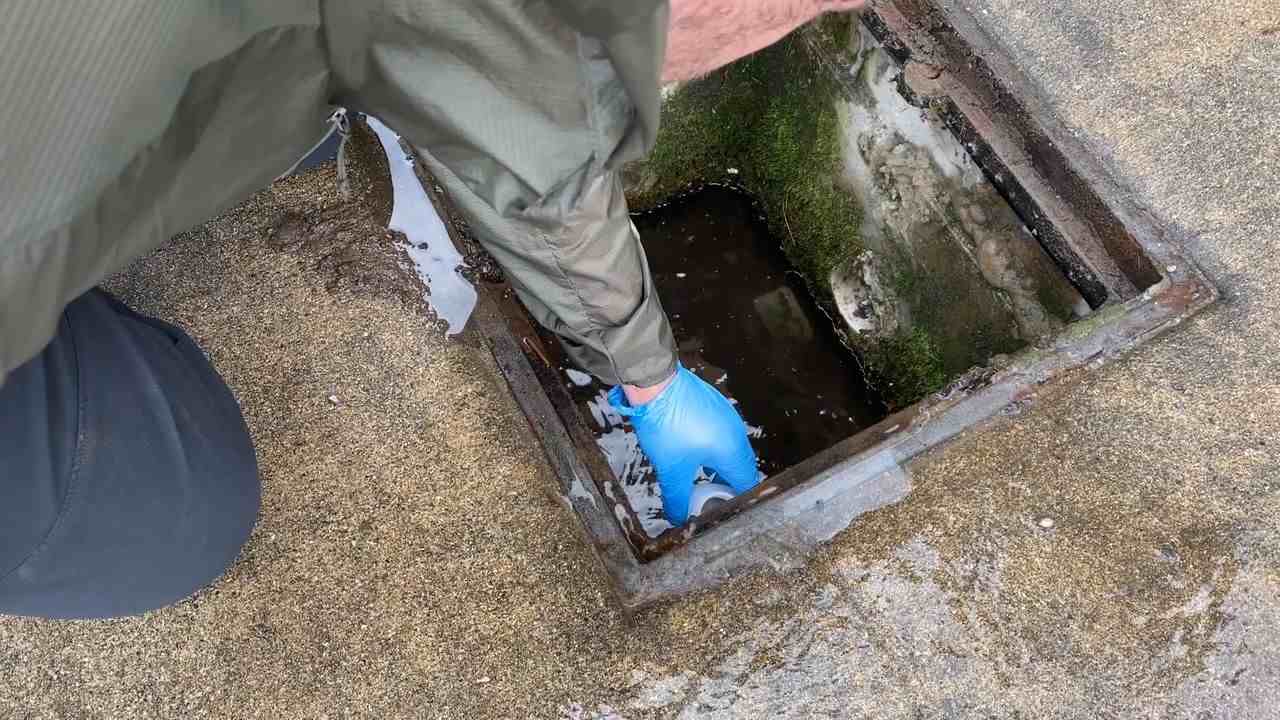
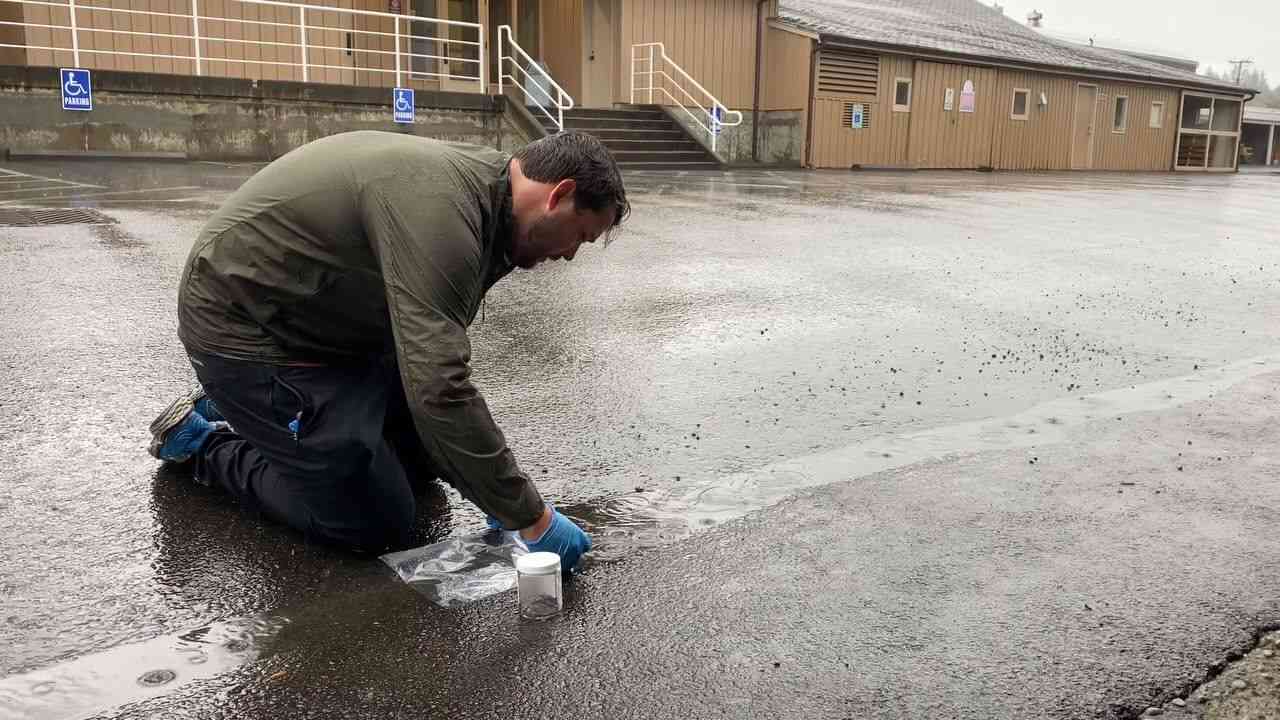
Look for things like curbs, speedbumps, or dips in the pavement. Water can accumulate in these spaces allowing us enough concentrated flow samples. In some cases, we may need to build up a small dam to concentrate the flow enough to sample. We have demonstrated how to build this in our long-form sampling video below:
2. Choose your Sample Containers Wisely
When sampling sheet flow, you want to give yourself the best chance to collect adequate volume. This is nearly impossible when sampling with a narrow-mouth bottle. Talk with your lab and discuss potential alternatives with them. In some circumstances, you may be able to sample using a secondary container to assist in taking your sample. A ziplock bag is a great option for this, as it can be laid flat and capture water from a wide area with minimal volume needed. Plastic or glass wide-mouth sample jars may also be sufficient secondary containers.
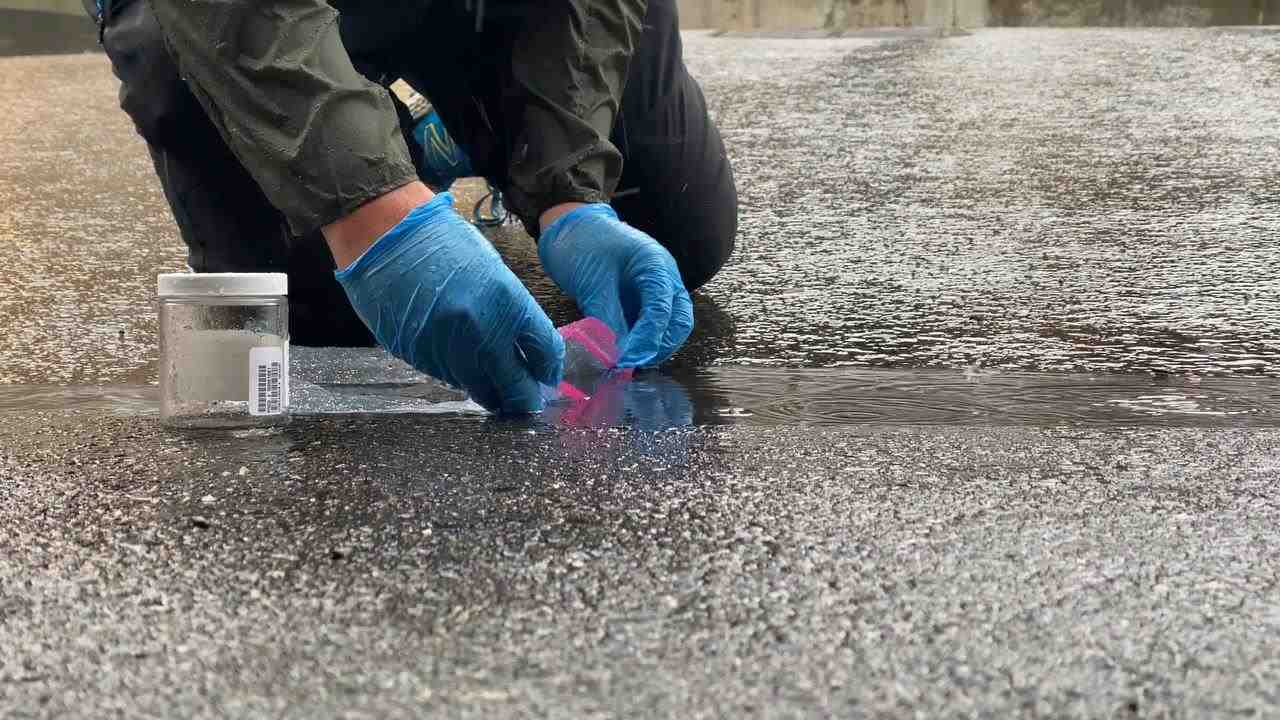
Some analytes, such as Total Petroleum Hydrocarbons, don’t allow for the use of secondary containers. If you find yourself in this scenario, ask your lab if they have any wide-mouth bottles that you can collect your sample in. Also, confirm the minimum volume they need for analysis- there is a good chance that you will be unable to fill the bottle completely.
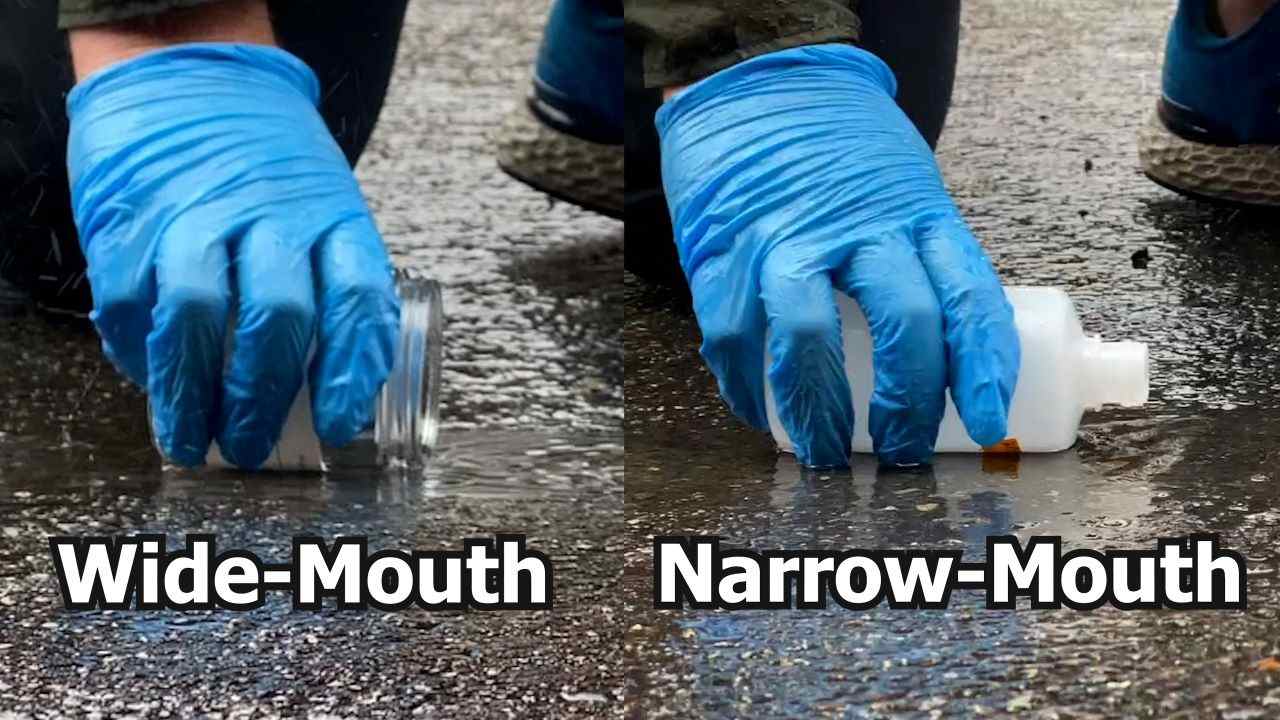
3. Use Proper Sample Handling Techniques
We want to handle our sampling equipment properly to avoid contaminating our samples. As with any sampling scenario, this means simple things like:
- Wearing clean gloves and changing them often
- Keeping our samples stored on ice
- Using the proper preservatives as identified by our lab
- Staying organized with our labels, COC forms, and data.
With sheet flow sampling, we often have one additional consideration: the cleanliness of our secondary container. Talk with your lab about the use of a secondary container. Explain your situation. For many parameters, a brand-new ziplock bag will be sufficiently clean. This is ideal, as these bags are inexpensive and come in giant packs. Other parameters may require samplers to wash equipment using special procedures to ensure quality. These cleaning procedures can be as simple as soapy water and a thorough rinse, and as complicated as needing acids and solvents applied in a specific order. Many labs will offer equipment cleaning as an optional service.
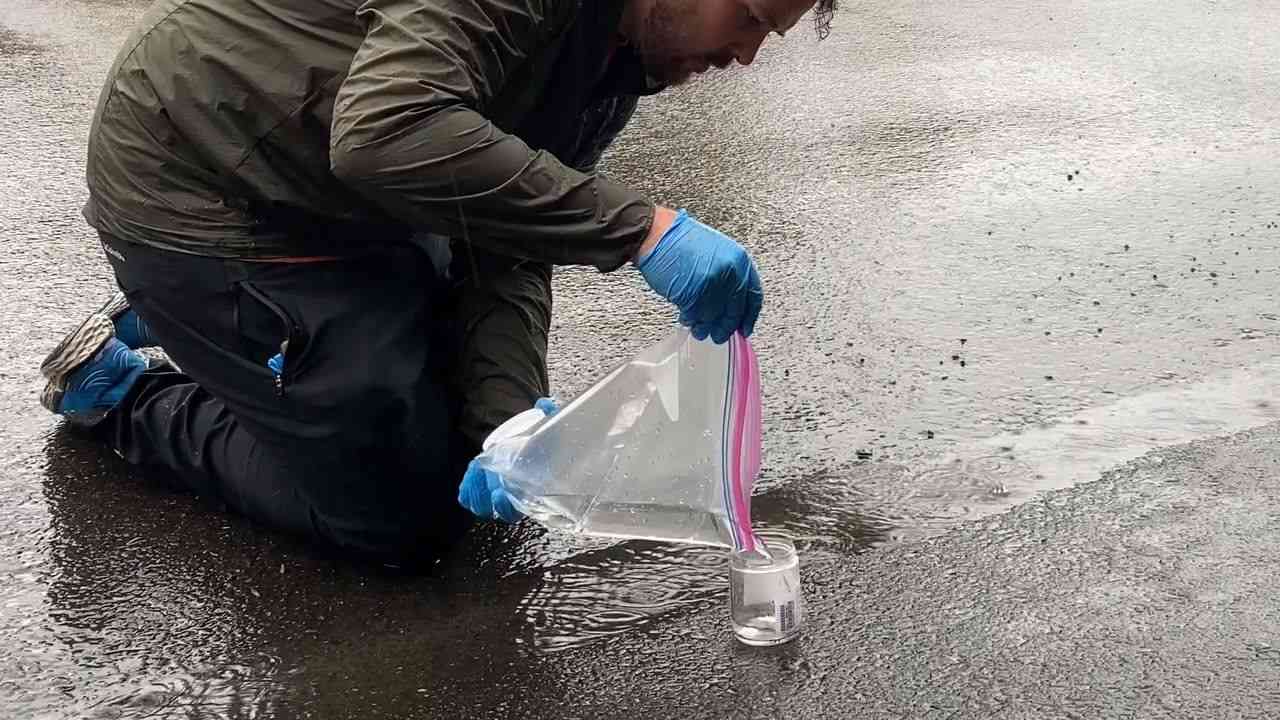
This cleanliness expands beyond just the secondary container. Plastic sheeting used to build a dam to sample from should also be adequately clean, as any material coming into contact with stormwater could be a vector for contamination. Don’t let a dirty container or sheet of plastic be the difference between acceptable water quality and a benchmark exceedance.
For more video content covering a wide range of stormwater topics, please visit our YouTube page!


